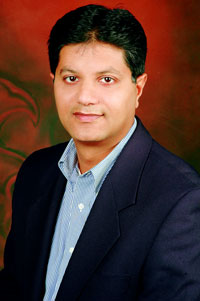Internet of Things (IoT)-Redefining Future Building Management
Mr. Rohan Parikh, CEO and Founder Terrasol Sustainability Solutions LLP
 |
Internet of Things is a proposed development of the Internet in which everyday objects have network connectivity, allowing them to send and receive data. Mr. Rohan Parikh, who recently founded Terrasol Sustainability Solutions LLP had previously held a role of Head of Green Initiatives and Infrastructure at Infosys introduced integrated design performance contracting, high performance windows and light directing devices among others, tells Built Constructions that the internet of things is changing the way the future buildings will be managed. |
Over the next 15 years more than 600 million people will be living cities. This is a great opportunity for India to ensure that all our future cities are smart and sustainable.
To deliver these high performance cities we require leadership who has the courage and conviction to take on unreasonable goals and ability to try innovative ideas. We can achieve a "4X" reduction in energy and water consumption and waste generation with appropriate policies, strong leadership, good designs and smart operations.
Buildings consume 40% of the world's energy and once built last for at least a 100 years, therefore it is very important that buyers exercise their right and demand good performance specifications. Unfortunately most buyers limit the specifications to aesthetics and space planning and never specify the energy and water consumption targets. Buyers must link the design fees to the actual performance of the building. If the government decides to give 20% higher FAR to buildings which consume 50% lower resources, we will become the most efficient country in the world by 2030.
A smart design is one which provides comfort against heat, glare and noise. It can use 75% lower resources if it is designed using passive architectural principles, where buildings are oriented North south and the envelope and glazing systems are designed to reduce the solar heat gains and provide comfort to the occupants. The use of glass has to be prudent with the window to wall ratio limited to 30%, but still ensuring that 90% of the occupied space is day lit.
A building design using the above principles will have much smaller mechanical and electrical systems. As an example the HVAC system in a building with high performance envelope, which is day lit and has efficient equipments will result in 40% lower heat loads resulting in smaller chillers, pumps, cooling towers and AHU, which means the connected electrical load is lower, which results in savings in copper wiring, transformer and DG set sizes. This is a significant saving in capital costs.
The internet of things is changing the way the future buildings will be managed. Today's smart sensors and actuators can send and receive granulized data to and from a centralized command centre. The smart engineers managing these command centres, can monitor, control and optimize buildings in real time ensure that no energy is wasted at the same time ensuring comfort conditions are met.
If we can improve our legal system to ensure that contracts have to be honoured by both parties, it will spur a whole new industry of energy service companies, where equipment manufacturers will replace your equipment at their cost and recover their capital investment and profits from the savings accrued.
The current policy framework in India for renewable energy is very encouraging. In order to increase the demand, we need to ensure participation of the private sector in generation of Renewable electricity. All SEZs and large consumers of electricity should have a mandate to generate at least 10% of their energy from renewable sources. This will result in a lot of corporate investing in either captive plants or committing on buying green energy from renewable energy developers. Financing of renewable energy projects is currently the bottleneck for large scale adoption. A special status of priority lending can make a huge difference to this sector.
Water is another important and depleting resource in urban India. It is very important that we revisit the NBC code on allowable per capita water consumption. We need to have very stringent policies on rain water harvesting and recycling and reuse of grey water. Use of recycled water for flushing, cooling towers, and irrigation should be made compulsory. Landscaping norms need to be redefined so we only use native plants to reduce the water requirements for landscaping.
Cities of the future have to take goals of zero waste to the landfills. We have to segregate, reuse, recycle or convert waste to energy for all waste that is generated. Our focus needs to be to reduce the use of virgin materials, if we have to sustain within the limits of our planet. If we have to deliver a legacy of smart cities to future generation we need strong leadership and conscious citizens who will use resources in a prudent and efficient manner.